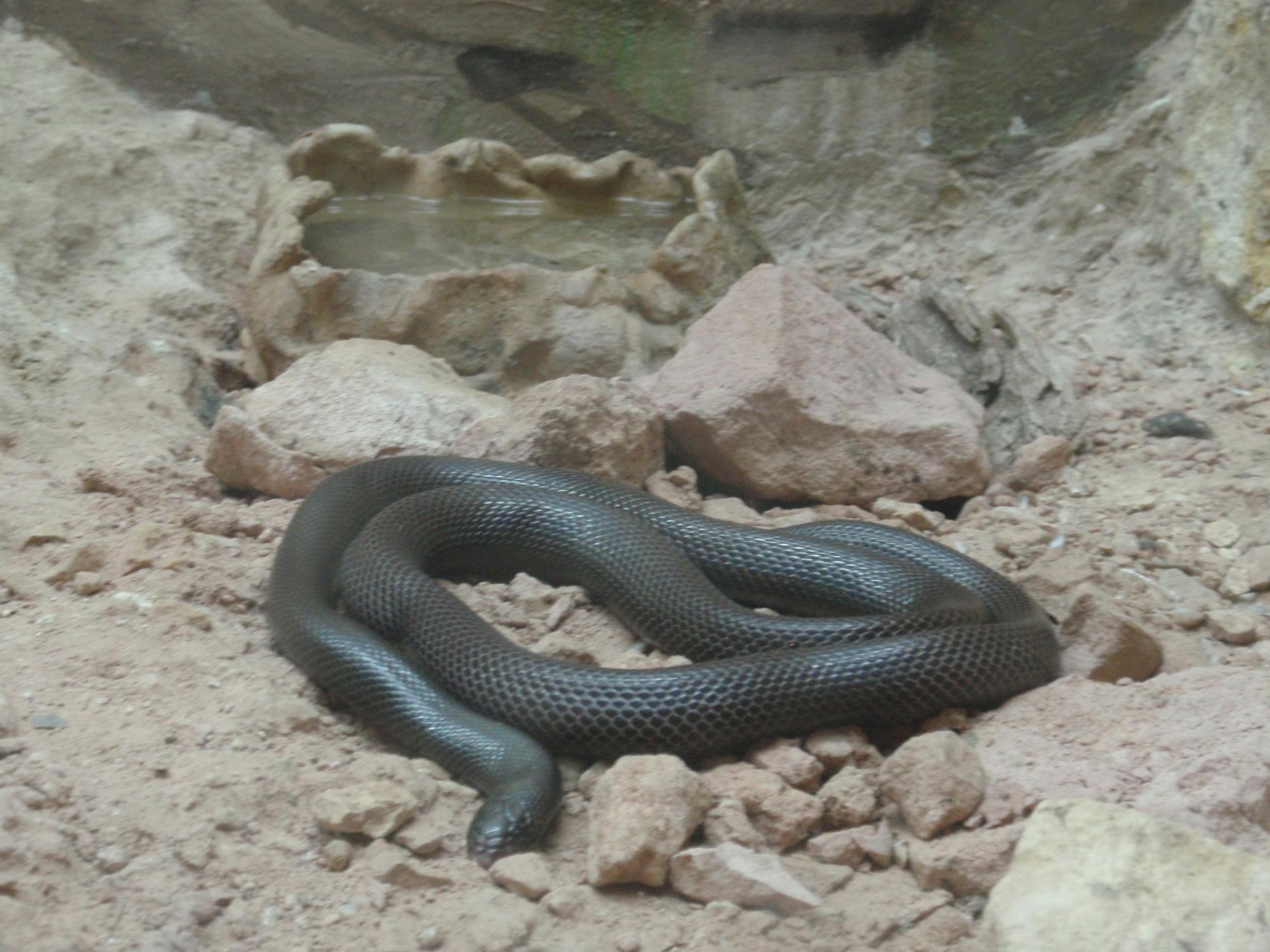New species of stiletto snake which can stab sideways discovered in west Africa
Burrowing serpent can inflict serious injuries with venomous fangs

A new species of stiletto snake which can stab sideways and jump a distance equal to its own body length has been discovered in West Africa.
Three specimens were found by a team of scientists working in the rainforests of southeastern Guinea and northwestern Liberia, and were later all identified as a species previously unknown to science.
The snake is from a family of vipers which have teeth protruding from the sides of their mouths, allowing them to strike prey with their venomous fangs from an unusual angle and without even opening their mouths.
The group is also known as mole vipers or burrowing asps and, due to their unusual physiology, they cannot be handled as other snakes can by holding them behind the head.
While most of these burrowing snakes are not venomous enough to kill a human, some are able to inflict serious tissue necrosis, which could lead to the loss of a finger or thumb.
Snake charmers of Uttar Pradesh
Show all 11The species has been named Branch’s stiletto snake, or Atractaspis branchi, and was named in honour of the South African herpetologist Professor William Branch, a world-leading expert on African reptiles who died in February 2017.
It was found by a team led by Dr Mark-Oliver Roedel from Berlin's Natural History Museum.
The new species lives in areas of untouched rainforest and on jungle edges in the western part of the Upper Guinea forests – a threatened region renowned for its unique and diverse fauna.
Branch’s stiletto snake is likely endemic to this area, the scientists said.
The first specimen of the new species was collected at night from a steep bank of a small rocky riverbed in a lowland evergreen rainforest in Liberia.
Upon picking it up, the snake tried to hide its head under body loops, bending it at an almost right angle, so its fangs were partly visible on the sides. Then, it repeatedly struck.
The team reported that it jumped distances almost as long as its entire body.
The other two specimens used for the description of the species were collected from banana, manioc and coffee plantations in south-eastern Guinea, about 27km apart.
“The discovery of a new and presumably endemic species of fossorial snake from the western Upper Guinea forests ... is not very surprising,” the researchers said.
They added: “However, further surveys are needed to resolve the range of the new snake species, and to gather more information about its ecological needs and biological properties.”
The team’s findings were published in the open-access journal Zoosystematics and Evolution.
Subscribe to Independent Premium to bookmark this article
Want to bookmark your favourite articles and stories to read or reference later? Start your Independent Premium subscription today.

Join our commenting forum
Join thought-provoking conversations, follow other Independent readers and see their replies